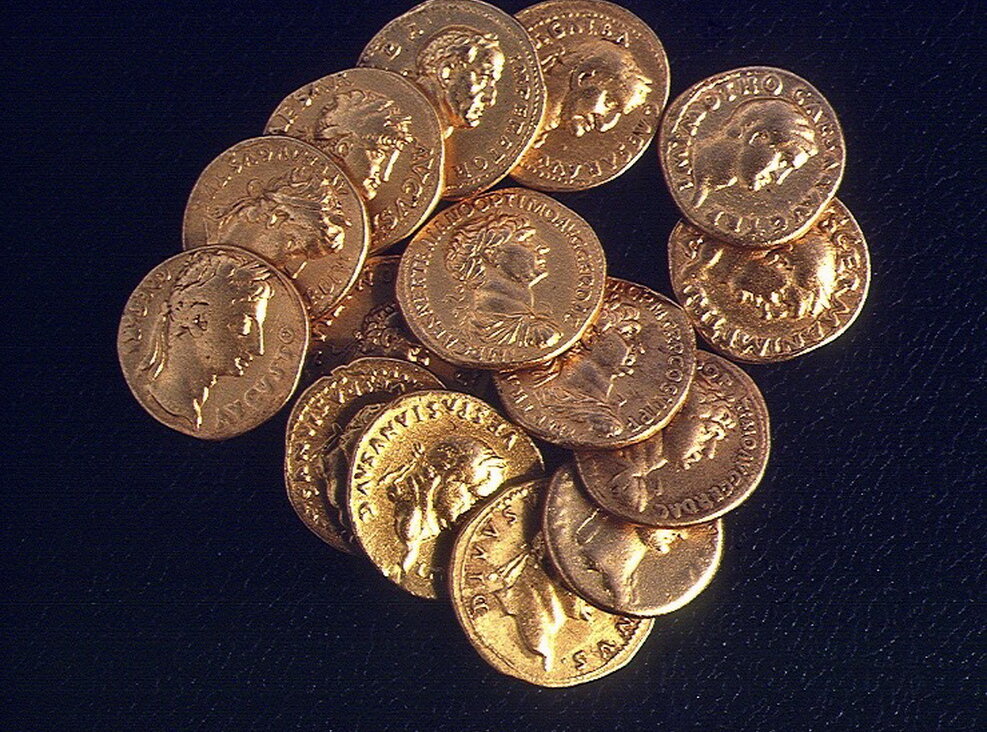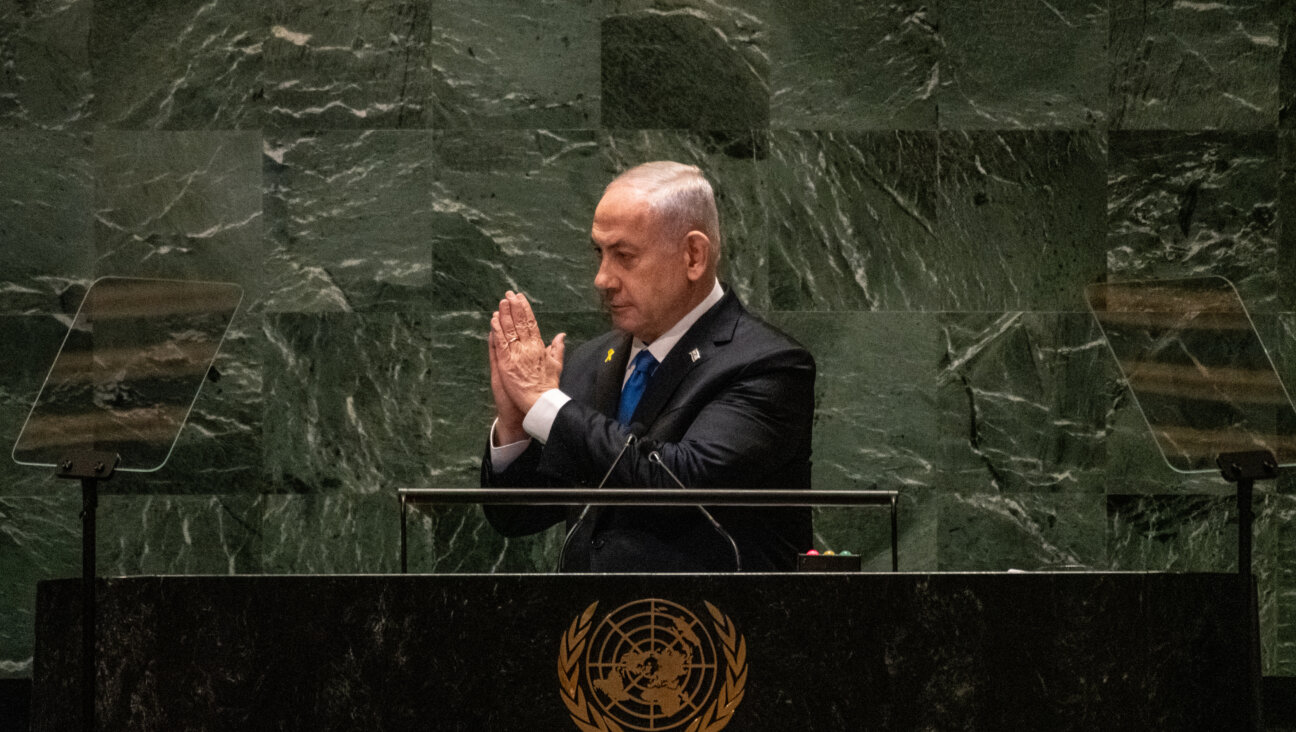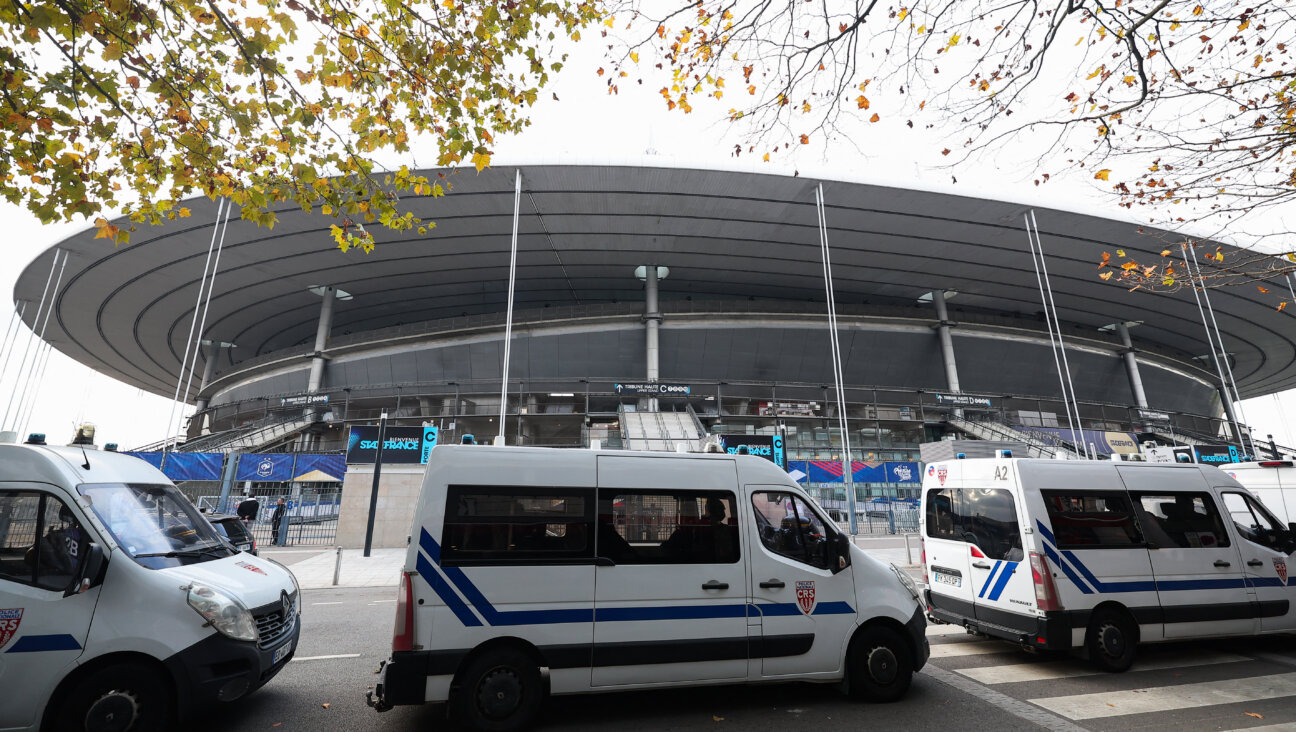A Matter of Life and Death

In Our Hands: The globe may be two thirds water, but shortages are still looming. Above, a water sculpture from a new exhibition at Toronto?s Royal Ontario Museum. Image by D. Finnin/American Museum of Natural History
Considering the firestorm around last year’s “Dead Sea Scrolls” exhibit — the Palestinian Authority demanded its cancellation, claiming Israel had “stolen” the artifacts — it’s understandable that Toronto’s Royal Ontario Museum might tread lightly around Middle East politics.
But the ROM’s new megashow, “Water: The Exhibition,” opens at a time when thorny policy challenges around water scarcity are gaining new urgency for Israel and its neighbors.
In February, a report from the consulting firm Strategic Foresight Group warned that the Middle East “is likely to plunge into serious humanitarian crisis due to depletion of water resources.” Next month, a group of environmentalists from the Middle East will visit the U.S. to plead its case for non-profit, trans-border water management initiatives. And a book due out this fall is warning that the Jordan River, a critical resource for the entire region, is dying.
“The river is in danger of disappearing,” says Rachel Havrelock, a professor of Jewish Studies and English at University of Illinois at Chicago and author of “River Jordan: The Mythology of a Dividing Line” (University of Chicago Press, October 2011). “Add the fact that we’re seeing huge population increases, unworkable water plans and popular uprisings across the region, and it becomes completely plausible that military clashes could erupt over water. Each state will want to protect its source.”
While it sidesteps such geopolitical concerns around H2O, the Toronto exhibit does acknowledge Israel’s pioneering role in modern water management; wall text claims that Israeli engineers “invented drip irrigation, which delivers water only where the plant needs it.” The Israeli technology “is one of the great examples of innovations we highlight around sustainability and water scarcity,” says Julian Kingston, the ROM’s director of education and programs and an organizer of the show.
“Water: The Exhibition” — an adaptation of a show originated by a global consortium of museums — also touches on Saudi Arabia’s use of desalination plants to keep water flowing in the kingdom. Though it’s not noted in the exhibit, desalination has also become a point of contention in the region, with private companies jockeying for lucrative contracts to purify and resell water to consumers at a profit. Activists claim corporate agendas have no place in managing the region’s dwindling resources.
But the ROM show isn’t intended to “suggest solutions” to the kinds of questions raised in the Strategic Foresight Group report, Kingston says. “A museum exhibit isn’t a good place to debate policy. We try to put the questions out there — water’s everywhere, but there’s uneven access to it.” The museum’s “advocacy position,” he says, “is about raising awareness. We’re not taking positions on cultural issues around water, but around scientific issues.”
The show does provide what Kingston calls “a natural and cultural history” of water, from its chemical structure to physical properties to big-picture issues. “It connects everything on the planet; without water, there’s no life,” he says. Along with multimedia components and “immersive” experiences, the show’s run will feature a series of symposia, including a talk on Canadian water exports. “Water: The Exhibition,” which also appeared at Chicago’s Field Museum and the Museum of Natural History in New York, also touches on “human impact,” environmental issues and challenges around water scarcity. “But we don’t get into a lot of detail about it,” Kingston says.
The museum’s position doesn’t surprise Havrelock, who says a business agenda may also color presentation of the issues. “Museums depend on corporate sponsorship, and all of the environmental-themed shows I’ve seen have had corporate benefactors,” she says. “So there’s an undertone of ‘corporate innovation will save us.’ But in the end, we need powers of state, of regions and of organizations that can look at these things across borders. Just raising consciousness is not going to get us anywhere.”
One of the region’s best hopes, Havrelock believes, is Friends of the Earth Middle East (FOEME), a consortium of Jordanian, Palestinian and Israeli environmentalists whose initiatives all involve cross-border cooperation — and minimal corporate involvement. “Our critique is that corporate interests are clearly led by the profit motive — to sell more water,” Gidon Bromberg, the organization’s Israeli director, told the Forward by e-mail. “They bring important technology, like membranes for desalination, but public interest must lead policymaking. Better if we manage the water we have more wisely than produce more water through private sector desalination.”
One of FOEME’s most closely watched initiatives has been the Jordan River Peace Park, which Bromberg and Havrelock believe could provide a template for much-needed regional cooperation — and equitable, efficient water management. The Peace Park proposal involves combining two adjacent patches, one in Israel, the other across the border in Jordan, to create a protected area where ecotourism would flourish.
The proposal would re-flood a 1920s-era manmade lake that has since dried up; its replenishment would create “greater opportunities for biodiversity protection, cooperative management, joint research programs, education and collaboration on nature-based tourism.” Jordan and Israel have already created a precedent of opening the border fence for controlled guided tourism at several locations, FOEME notes.
“The Peace Park is about trust-building and fairly sharing water between Israelis and Palestinians, as well as with nature, to ensure long-term sustainability,” Bromberg says. “Only after six years of drought in Israel is conservation being taken seriously. Had measures been in place a decade ago, we wouldn’t be in such a crisis.” Bromberg will make a case for the Peace Park and other FOEME initiatives at a forum at Chicago’s KAM Isaiah Israel Congregation on April 1.
For Havrelock, who helped organize Bromberg’s visit, the Peace Park also represents the best hope in a region running out of options. “I end my book with the Peace Park,” she says. “It would rehabilitate the Jordan River through sustainable means, create a sustainable model of ecotourism and provide a model for regional cooperation.”
But beyond the Israel-Jordan border, Havrelock says, “we’re at a balancing-act point in time. This is the way we’re going to have to start thinking if we don’t want clean air, clean water and healthful food to be available only to the super-rich.”
Michael Kaminer is a frequent Forward contributor whose writing also has appeared in the Washington Post and the New York Times.
“Water: The Exhibition” runs at Toronto’s Royal Ontario Museum through September 5, 2011.
A message from our CEO & publisher Rachel Fishman Feddersen

I hope you appreciated this article. Before you go, I’d like to ask you to please support the Forward’s award-winning, nonprofit journalism during this critical time.
At a time when other newsrooms are closing or cutting back, the Forward has removed its paywall and invested additional resources to report on the ground from Israel and around the U.S. on the impact of the war, rising antisemitism and polarized discourse.
Readers like you make it all possible. Support our work by becoming a Forward Member and connect with our journalism and your community.
— Rachel Fishman Feddersen, Publisher and CEO























